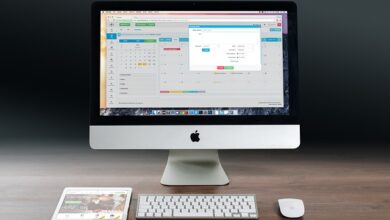How to Master Excel & Impress Any Employer

Microsoft Excel is one of the most widely used tools in the professional world, spanning industries from finance and accounting to marketing, data analysis, and project management. Whether you’re preparing for a job interview or looking to stand out in your current role, mastering Excel can significantly boost your career prospects. In this article, we’ll explore how you can become an Excel expert and impress any employer with your skills.
Why Excel Skills Matter
Before diving into the “how,” let’s address the “why.” Employers value Excel proficiency because it’s a versatile tool that helps streamline workflows, analyze data, and make informed decisions. Here are some reasons why mastering Excel is crucial:
- Data Analysis : Excel allows you to process large datasets, identify trends, and generate actionable insights.
- Automation : With features like macros and formulas, you can automate repetitive tasks, saving time and reducing errors.
- Visualization : Excel’s charting and graphing capabilities help present data in a clear and engaging way.
- Problem Solving : From budgeting to forecasting, Excel provides tools to solve complex business problems efficiently.
- Cross-Industry Relevance : Virtually every industry uses Excel, making it a universally valuable skill.
Now, let’s break down the steps to master Excel and showcase your expertise.
Step 1: Build a Strong Foundation
To truly master Excel, you need to start with the basics. Even if you’ve used Excel before, revisiting foundational concepts ensures you have a solid understanding.
a) Learn the Interface
- Familiarize yourself with the Ribbon, tabs, and toolbars.
- Understand how worksheets, workbooks, and cells function.
- Explore basic navigation shortcuts (e.g., Ctrl + Arrow Keys to jump between data).
b) Master Basic Functions
- Arithmetic Operations : Learn how to use SUM, AVERAGE, MIN, MAX, and COUNT functions.
- Cell Formatting : Practice formatting numbers, dates, and text for clarity.
- Sorting and Filtering : Organize data quickly using these essential tools.
c) Keyboard Shortcuts
- Memorize common shortcuts like:
Ctrl + C(Copy),Ctrl + V(Paste),Ctrl + Z(Undo).Alt + =(AutoSum),Ctrl + T(Create Table).
- Shortcuts not only save time but also demonstrate efficiency during tasks.
Step 2: Dive Into Intermediate Features
Once you’re comfortable with the basics, move on to intermediate-level features that will set you apart.
a) Formulas and Functions
- Logical Functions : Use IF, AND, OR, and nested IF statements to perform conditional calculations.
- Lookup Functions : Master VLOOKUP, HLOOKUP, INDEX-MATCH, and XLOOKUP for retrieving specific data points.
- Text Functions : Learn LEFT, RIGHT, MID, CONCATENATE, and TEXT for manipulating strings.
b) Data Management
- Tables : Convert ranges into tables for better organization and dynamic referencing.
- PivotTables : Create PivotTables to summarize and analyze large datasets effortlessly.
- Data Validation : Restrict input types (e.g., dropdown lists) to maintain data integrity.
c) Charts and Graphs
- Experiment with different chart types (bar, line, pie, scatter plots).
- Customize visuals with titles, legends, and axis labels.
- Use sparklines for compact trend representations within cells.
Step 3: Unlock Advanced Techniques
Advanced Excel skills are where you truly shine as a power user. These techniques require practice but pay off immensely in terms of productivity and problem-solving.
a) Automation with Macros
- Record and run macros to automate repetitive tasks.
- Edit macro code in Visual Basic for Applications (VBA) to customize functionality.
- Example: Automate report generation by combining multiple steps into a single button click.
b) Power Query and Power Pivot
- Power Query : Import, transform, and clean data from various sources without manual effort.
- Power Pivot : Build sophisticated data models and relationships for advanced analysis.
- Together, these tools enable seamless integration with external databases and big data platforms.
c) What-If Analysis
- Use Goal Seek to determine the input needed to achieve a desired output.
- Create scenarios with Scenario Manager to compare outcomes under different assumptions.
- Build Data Tables to evaluate how changes in variables affect results.
d) Advanced Formulas
- Combine functions like SUMIF, COUNTIF, and AVERAGEIF for conditional calculations.



